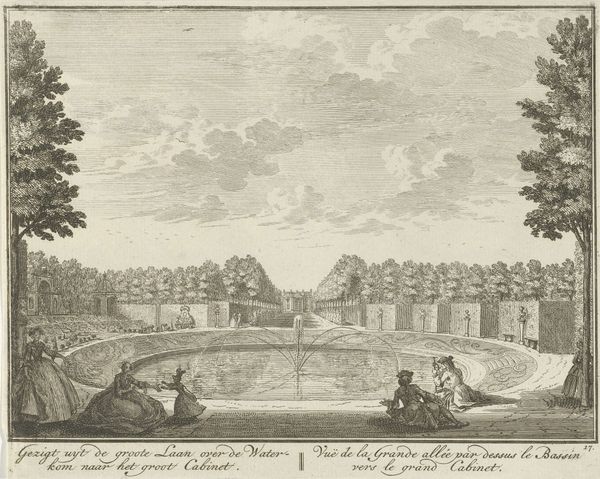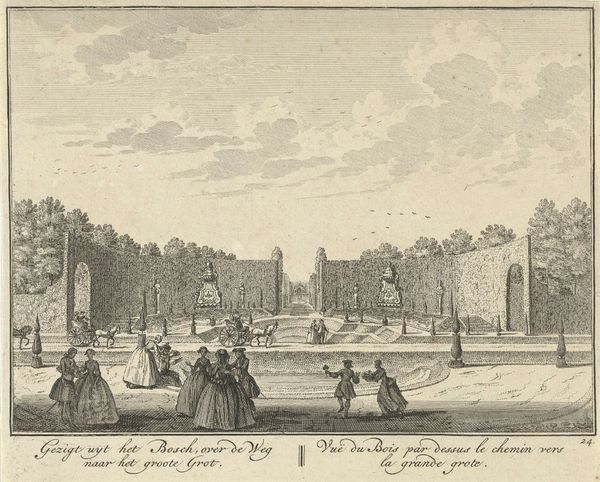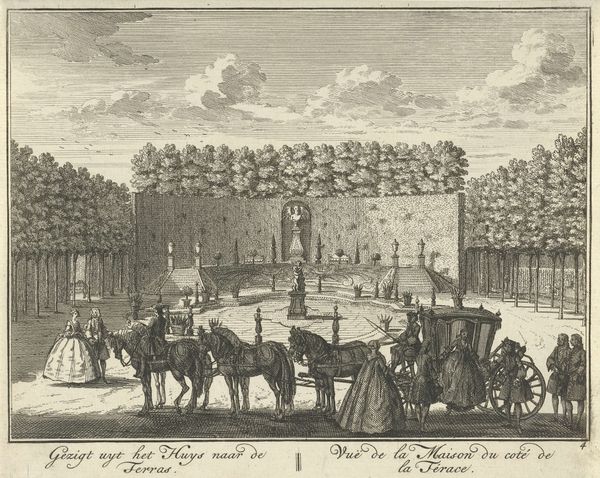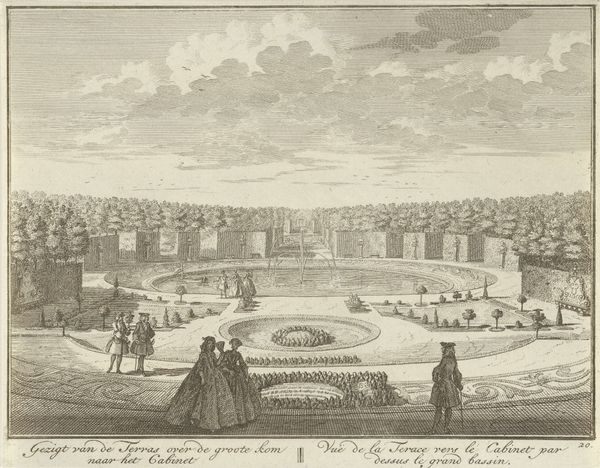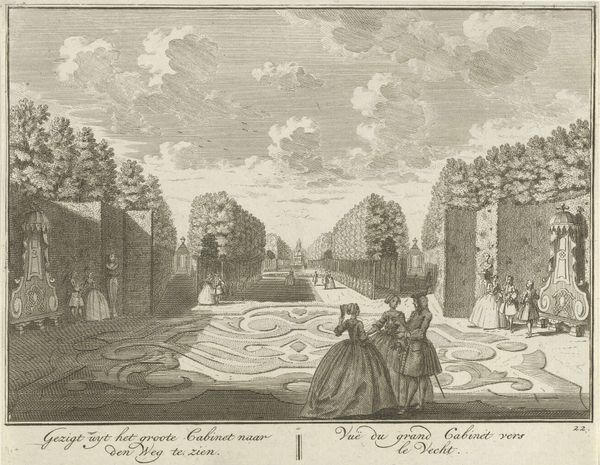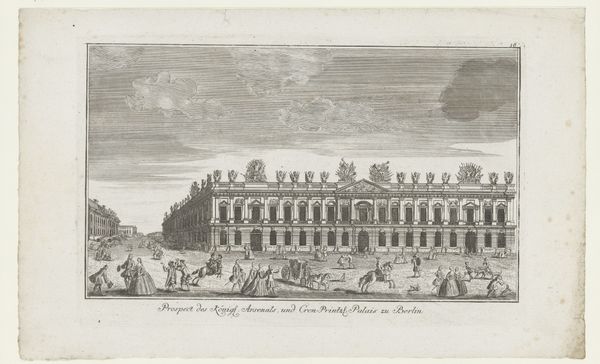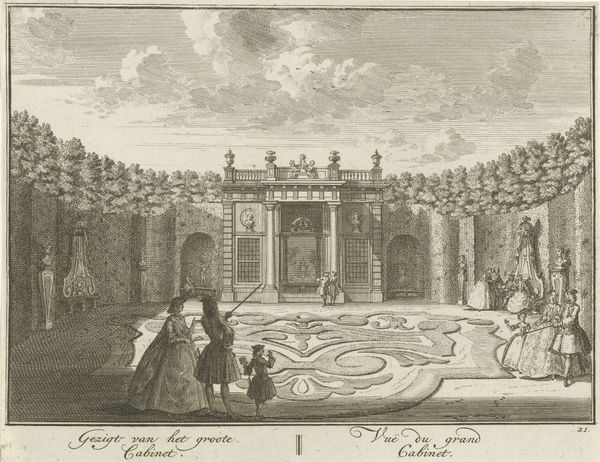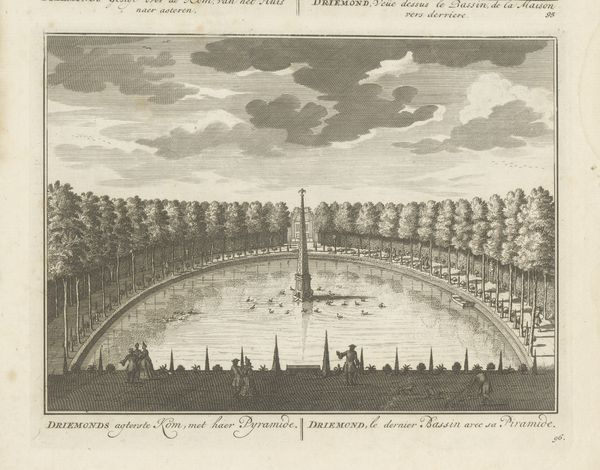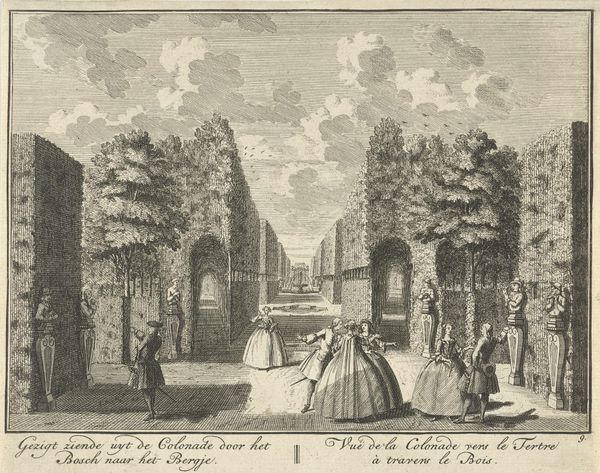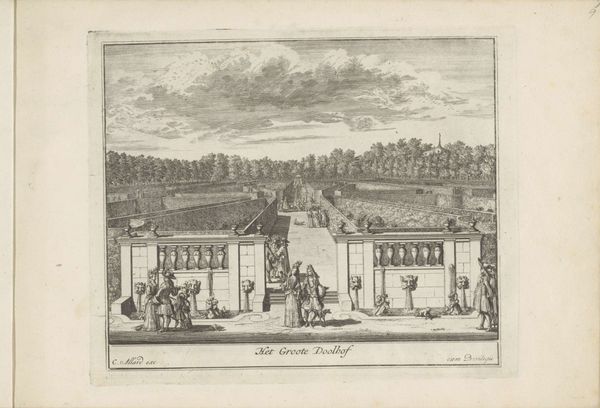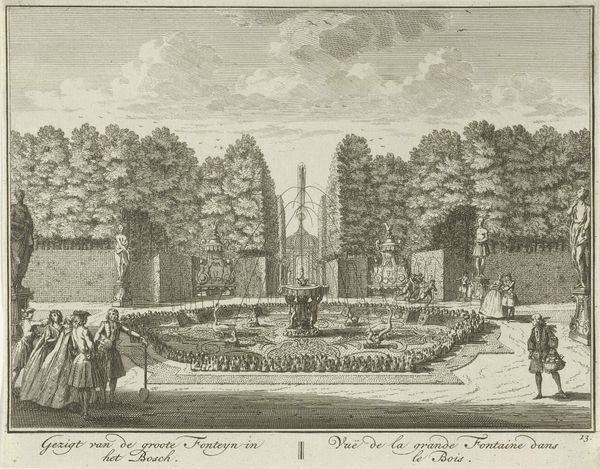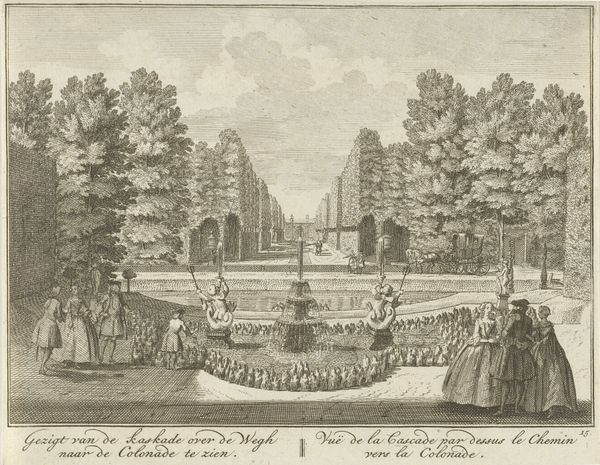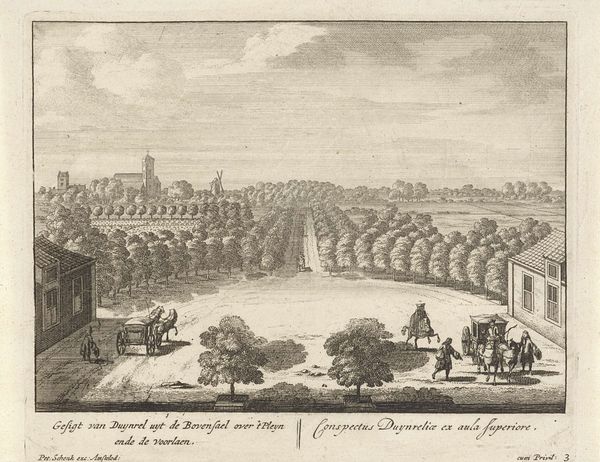
print, engraving
#
baroque
# print
#
old engraving style
#
landscape
#
perspective
#
cityscape
#
genre-painting
#
engraving
Dimensions: height 157 mm, width 202 mm
Copyright: Rijks Museum: Open Domain
Curator: Here we have a print entitled "Openluchttheater in de tuin van Huis ter Meer te Maarssen" dating from around 1740, by Hendrik de Leth, depicting an outdoor theater. The piece is quite delicate, almost fragile. The thin lines create a sense of meticulousness, but also a certain detachment. What is your immediate reaction? Editor: Well, my eyes are immediately drawn down that incredibly assertive central perspective! It's like the whole garden is funnelling you toward that distant focal point. The engraving work has a distinctly formal and rigid energy. Curator: That perspective plays such an important role. The long lines draw us toward what might be perceived as a cultural hub. This location seems deliberately created as a stage to foster and potentially police the exchange of ideas and social performances. Editor: Absolutely. Gardens themselves often become metaphors, or sites of encoded symbols. I wonder, in terms of iconographic readings, what the theatrical setting would have suggested. Was this space about celebrating high culture, or even critiquing social roles by inverting traditional theatre practices? I am captivated by that. Curator: Those are important questions. I think in many ways the theater operated as a privileged social playground, a curated realm removed from the realities of daily life. How complicit or critical could art really afford to be given that inherent remove? Editor: You can really feel the weight of the Baroque style throughout. This artistic period loved the theatrical, loved spectacle as an expression of power. That long, controlled view feels absolutely emblematic of an elite sensibility trying to command not just physical space, but narrative space as well. Curator: Right, the elite controlling the visual, and by extension, the narrative. What I also consider is the social cost behind such refinement. Labor exploitation of groundskeepers, financial capital being invested rather than shared with marginalized groups. Even within its elegant portrayal, the image sparks complex sociopolitical considerations. Editor: Looking closer, the garden itself presents an interesting duality; the architectural elements juxtaposed with organic nature. Was this about harmony, or control over the wild? Both elements coexist, as in life! Curator: Ultimately this image becomes a starting point for considering not just artistry, but its complex social framework, then and now. Editor: Yes, art always carries a cultural memory! Examining Hendrik de Leth's "Openluchttheater..." unveils enduring echoes that keep resonating across centuries.
Comments
No comments
Be the first to comment and join the conversation on the ultimate creative platform.
